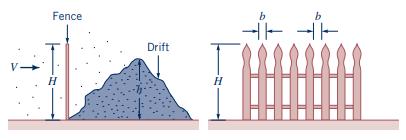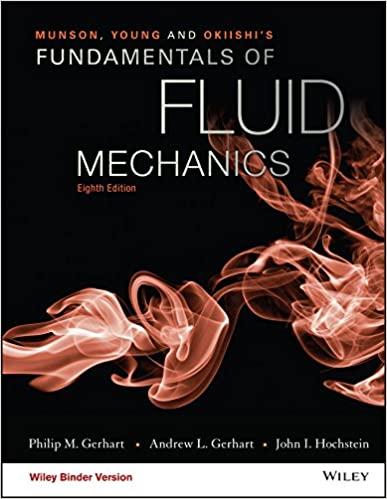During a storm, a snow drift is formed behind a snow fence as shown in Fig. P7.56.
Question:
During a storm, a snow drift is formed behind a snow fence as shown in Fig. P7.56. Assume that the height of the drift, \(h\), is a function of the number of inches of snow deposited by the storm, \(d\), height of the fence, \(H\), width of slats in the fence, \(b\), wind speed, \(V\), acceleration of gravity, \(g\), air density, \(ho\), and specific weight of snow, \(\gamma_{s}\).
(a) If this problem is to be studied with a model, determine the similarity requirements for the model and the relationship between the drift depth for model and prototype (prediction equation).
(b) A storm with winds of \(30 \mathrm{mph}\) deposits \(16 \mathrm{in}\). of snow having a specific weight of \(5.0 \mathrm{lb} / \mathrm{ft}^{3}\). \(\mathrm{A} \frac{1}{2}\)-sized scale model is to be used to investigate the effectiveness of a proposed snow fence. If the air density is the same for the model and the storm, determine the required specific weight for the model snow and required wind speed for the model.
Figure P7.56

Step by Step Answer:

Munson Young And Okiishi's Fundamentals Of Fluid Mechanics
ISBN: 9781119080701
8th Edition
Authors: Philip M. Gerhart, Andrew L. Gerhart, John I. Hochstein





